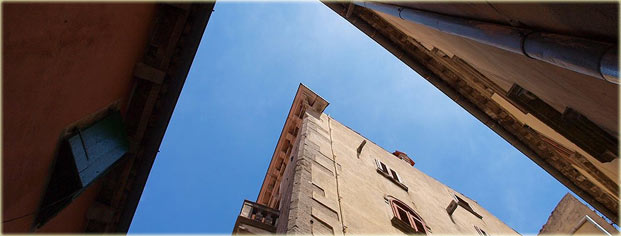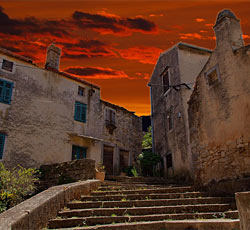-
Labin Isztria délkeleti régiójában helyezkedik el egy Rabac feletti hegyen, 5 kilométerre a legközelebbi kikötőtől. Régebben Albonának nevezték, és először 285-ben esik róla említés.
Labin (Labin, Isztria)
Labin, Travel Guide for holidays in Labin, Istria
Labin – Points of interests
 The medieval town of Labin is located on the hill above Rabac. Its old name of Albona was first mentioned in 285 AD. The birthplace of Matthias Flacius Illyricus, the reformer and collaborator of Martin Luther, it is a cultural and administrative center today. Labin, a historic town situated on a 320 meters high hill and only three kilometers from the seaside, was populated already two thousand years B.C. Its old Illyrian-Celtic name is Albona or Alvona and it was probably founded by Celts in the 4th century B.C. on the ruins of the ancient city. Some historians say it was fortified by the Illyrians in the 11th century B.C. The same historians clame that Albona in the Celtic language means ‘a town on the hill’ or ‘an elevated settlement’. Titus Livius said that Labin inhabitants were pirates. After the disputes between the local inhabitants and Romans, which had started in the 3rd century B.C., Istra came under the Roman rule in 177 B.C. The borderline was the river Rasa. Labin and its surroundings became an integral part of Illyrian, the Roman province with a high degree of independence and authority over the nearby settlements. The oldest written document about Labin is a relief from the 3rd century with the insertion ‘RES PUBLICA ALBONESSIUM’. The town spent most of its later history under Venice rule which is fairly recognizable through its architecture. For two last centuries coal mining was the exclusive economy of the area. Labin was the most important Croatian mining town and it is well know for its rebellion in 1921 when 2000 miners in protest against the Fascism, founded Labin Republic which lasted only a month. After a walk through the narrow streets of the Old Town, visit the Town Museum with its archaeological and unique in this part of Europe, a miniature coal mine.
The medieval town of Labin is located on the hill above Rabac. Its old name of Albona was first mentioned in 285 AD. The birthplace of Matthias Flacius Illyricus, the reformer and collaborator of Martin Luther, it is a cultural and administrative center today. Labin, a historic town situated on a 320 meters high hill and only three kilometers from the seaside, was populated already two thousand years B.C. Its old Illyrian-Celtic name is Albona or Alvona and it was probably founded by Celts in the 4th century B.C. on the ruins of the ancient city. Some historians say it was fortified by the Illyrians in the 11th century B.C. The same historians clame that Albona in the Celtic language means ‘a town on the hill’ or ‘an elevated settlement’. Titus Livius said that Labin inhabitants were pirates. After the disputes between the local inhabitants and Romans, which had started in the 3rd century B.C., Istra came under the Roman rule in 177 B.C. The borderline was the river Rasa. Labin and its surroundings became an integral part of Illyrian, the Roman province with a high degree of independence and authority over the nearby settlements. The oldest written document about Labin is a relief from the 3rd century with the insertion ‘RES PUBLICA ALBONESSIUM’. The town spent most of its later history under Venice rule which is fairly recognizable through its architecture. For two last centuries coal mining was the exclusive economy of the area. Labin was the most important Croatian mining town and it is well know for its rebellion in 1921 when 2000 miners in protest against the Fascism, founded Labin Republic which lasted only a month. After a walk through the narrow streets of the Old Town, visit the Town Museum with its archaeological and unique in this part of Europe, a miniature coal mine. Photo to buy
| If you want to buy one of teh next photos please send us an e-mail at info@istriasun.com | ||||
 |  | |||